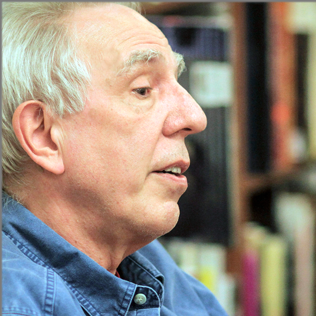[by Peter Gelfan]
Unlike nonfiction, fiction’s motor doesn’t run on information, but on its opposite: mystery.
I’m not talking about mystery as a genre, but as the essential quality in all fiction that cultivates curiosity, stimulates the imagination, invites participation, and generally keeps readers reading. Every step of the reader’s journey should be fraught with questions, not only about how the story turns out, but about character, motive, backstory, and—perhaps most importantly—what he or she would do in the hero’s or villain’s shoes. All of which runs smack into the chronic bugbear of many writers, both beginners and veterans—exposition. To tell or not to tell, how much, and when?
The best solutions seem counter-intuitive to those of us who learned in school to thoroughly introduce our subject and subtopics, then construct sentences, paragraphs and whole pieces as an unbroken chain of logic-joined facts. Fiction, like life, is driven more by questions than by answers. People, whether real or fictional, fascinate us not because we know all about them but because we’d like to, and situations engage our intellects and tear at our hearts because of their uncertainties.
After being harangued by teachers and editors about how their descriptions, characterizations, and backstory are interfering with plot momentum, some writers begin to regard exposition as a necessary evil, a bitter pill nonetheless vital to keeping readers fully informed. Turning the sore subject of exposition into a sweet and joyful delight only requires a mental flip: instead of regarding reader ignorance as a liability to be remedied, look upon it as an asset to use.
In a manuscript I recently reviewed, the author opens amid a tense corporate-takeover standoff—good, gripping stuff. But her second paragraph lapses into backstory to explain, among other things, that the heroine and her boardroom rival were once married and that his determination to win is fueled in part by his secret involvement in financing freedom fighters in his family’s homeland. At this point in the narrative, because we don’t yet know or much care about the characters, these two potentially explosive facts become tepid background exposition devoid of power.
When I advised the author to cut the exposition and stay focused on the meeting, she worried that readers wouldn’t then understand the intense personal undercurrents swirling around the negotiations. But after performing the mental acrobatics I describe above, she realized that letting readers wonder about these hidden tensions and motives would enhance rather than dampen engagement, and she designed a pair of scenes to come much later in which these two bits of vital information would surface as dramatic revelations. The point is, every dry fact you’re tempted to cram down the reader’s throat in Chapter One can instead become a juicy tidbit to be greedily gobbled up in Chapter Eight.
Obvious when you think about it, but easily forgotten, the process of writing a novel is very different from reading one. Often an author works out all the background and backstory ahead of time, knows the biographies of even minor characters, and has the keys to all the skeleton closets; you may have to do all this if you want to create multidimensional characters and elegantly woken plot lines. Once you’ve done all that work, your natural communicative impulse is put it all down on paper for your readers so that you and they are on the same page. Except you’re not on the same page: they’re starting the first page, you’ve finished the last.
Most of life is hidden. In vital matters, we have to deal with people who are complete strangers to us, we fall in love with and even marry someone who surely still has a few secrets, and God knows what our friends actually think of us or what our children do behind our backs. In real life these unknowns can range from amusing to terrifying, but in fiction they form the basis of reader engagement and then satisfaction. So regard each piece of exposition not as a necessary chore but as a potential treat for readers.
Authors and aficionados of espionage novels are well versed in need-to-know, a principle as vital to writing exposition as to running spies. Reveal a fact to readers only if they need to know it to follow the story at all, not until they need to know it and you’ve made them ravenous for it, and then only in as much detail as necessary.
Here’s a simple exercise. Take the first chapter of your manuscript—especially the opening pages, where you capture or lose a potential reader—and highlight all exposition, large or small.
That done, look at the balance between highlighted and unmarked text. Remembering that readers are in it for the story rather than the background, are you mainly giving them what they want, or what you think they ought to know? Next, look at each bit of exposition on its own and run it through a test:
- Do readers need to know this in order to engage with what’s going on? If not, cut.
- Do readers need to know this now? If not, move it back to the last possible moment.
- Do readers need this much information? If not, trim it.
Are readers hungry to know this? If not, it’s probably unnecessary anyway. But if it really is necessary, how can you raise a question about it beforehand, something readers can ponder over and make guesses about, for which you can now provide a dramatic and satisfying revelation?
If you find this exercise useful in the opening chapter, go on to the next.
While there’s plenty more to know about writing effective, graceful exposition, the most important basic is your own attitude. What the reader doesn’t know can only help you.
For more insight on classy handling exposition and backstory, please check out chapter 2 of Self Editing for Fiction Writers by Renni Browne and Dave King.
(Image courtesy of flickr user Jinx!)







